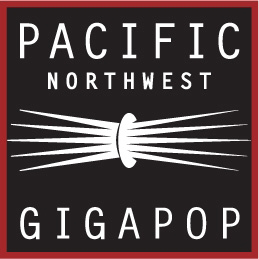AARNet launches SDN innovation platform for researchers
AARNet, Australia’s Academic and Research Network, today announced the launch of the Australia Wide-Area SDN Testbed, an innovation platform for developing high-speed technologies, established in collaboration with nine universities and CSIRO Data61. The announcement was made during the Open Networking Foundation SDN Down Under event in Sydney.
Software Defined Networking (SDN) is an emerging technology with the potential to revolutionise the way networks are provisioned and managed. SDN offers solutions for improving network flexibility and reducing costs via software-based management and control.
A real-world research environment
“The Testbed is a real-world research network environment, a simulation of the Internet that we’ve put in place to make it easier for researchers in the fields of computer science, engineering and mathematics to test, prototype and validate advanced networking concepts in the SDN arena and accelerate the development of high-speed networking. Developing and supporting initiatives to explore what the future network might look like has been a focus of AARNet’s work since its early days of pioneering the Internet in Australia,” says AARNet’s CEO Chris Hancock.
David Wilde, AARNet’s Chief Technology Officer says access to a wide-area SDN testbed provides researchers with new opportunities to exploit the potential of SDN.
“We know SDN works in single domain environments, like the campus and data centre, but little research has been undertaken to validate whether the technology works across multiple domains with different administrators, such as telco carriers and enterprises.”
A consortium of researchers from CSIRO Data61 and nine universities, led by the University of New South Wales (UNSW), secured LIEF (Linkage Infrastructure, Equipment and Facilities) grant funding from the Australian Research Council to deploy SDN equipment within each of their labs.
The other eight consortium members are University of Technology Sydney, Macquarie University, University of Adelaide, RMIT, Swinburne, University of Queensland, University of Wollongong and Australian National University.
These sites are being interconnected by AARNet to create a national wide-area SDN testbed environment with the ability to peer internationally with testbeds in the USA, Europe and elsewhere.
Professor Vijay Sivaraman of the UNSW School of Electrical Engineering and Telecommunications and a driving force behind the project says, “SDN is fairly new and disruptive, but a barrier to uptake for organisations that could benefit from it, such as enterprises and carriers, is that the technology hasn’t been validated sufficiently. The main objective for establishing this Testbed is to demonstrate to industry that the technology is not just a great idea on paper, but something that will work in practice, and show how it works under real conditions.”
SDN teases apart the data forwarding function of a piece of network equipment from its path calculation function, taking advantage of commodity network hardware for the former and inexpensive virtualised compute for the latter to deliver network flexibility.
Testbed infrastructure
Based on open standards, the Testbed infrastructure consists of a core of four interconnected NoviFlow OpenFlow-enabled switches at AARNet backbone sites in Sydney, Melbourne, Perth and Seattle controlled by virtual machines (VMs) in Sydney and Melbourne.
The four switches talk to the VM OpenFlow controllers, which are running ONOS software, developed by Open Networking Lab, and appear as a single distributed router – spread across 16,000km. Connectors from this AARNet core run out to SDN equipment (a similar set up of switches and servers) installed in the labs at the participating universities and CSIRO Data61.
With the AARNet core acting as a network exchange interconnecting the university SDN network domains, the setup simulates the Internet.
The Seattle presence enables AARNet to interconnect the testbed with similar testbeds operated by Internet2 and ESnet research networks in the United States, as well as with the global OpenFlow network facility recently deployed by ON.LAB, boosting opportunities for Australian researchers to run experiments with their US-based counterparts.
“Connecting to Seattle enables us to examine network behaviour at genuine intercontinental scale, and will enable us to explore how and if SDN works across progressively larger geographical areas. Australia’s international connectivity is very expensive – a potential real world application of SDN is to examine ways we can make more efficient use of our international links, leading to cost savings,” says Wilde.
He is also interested in exploring the dynamic provisioning of multi-layer services for better integration of network compute and storage nationally and globally.
“This is about building a network that can more intelligently shift connect compute resources to data storage, or move data without taking congestion paths,” he explains.
Professor Sivaraman says a primary research focus for UNSW is quality of service.
“At the campus level, we’re interested in how we can improve the user experience online by using SDN technology. We want to be able to distinguish between video content, for example, and a large data transfer from a research lab so that we can prioritize traffic,” says Professor Sivaraman.
Craig Russell, Principal Research Engineer of CSIRO’s Data61 innovation group, and another driving force behind the project, says the ideal outcome from research in this area is a wider acceptance that SDN is viable so that commercial organisations can see that the technology can solve some of the problems they face.
“The Testbed can also be utilized as an incubator for startups, an environment for stimulating ideas and developing proof of concepts, and nurturing projects that ultimately end up as products in the marketplace,” says Russell.
Media Contact
Jane Gifford
+61 2 9779 6960
media@aarnet.edu.au
https://news.aarnet.edu.au/aarnet-launches-sdn-innovation-platform-for-researchers/
